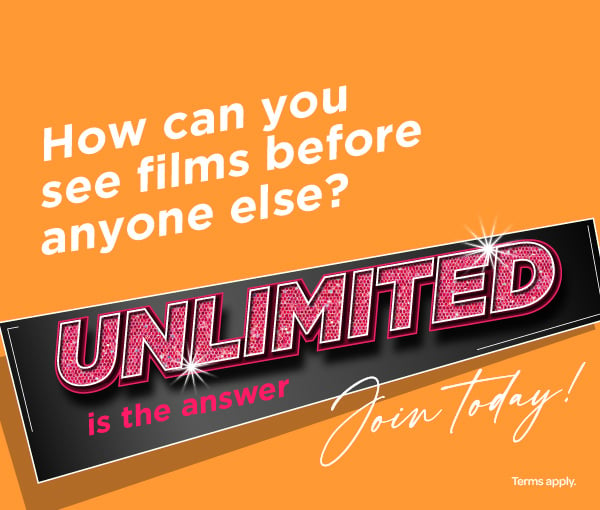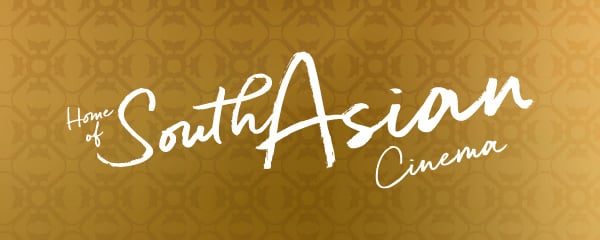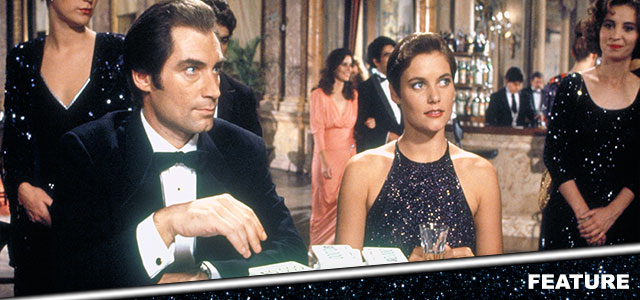
The 25th James Bond movie No Time To Die arrives in Cineworld in September, and we're counting down the days by revisiting all the 007 movies in chronological order of release.
In honour of Daniel Craig's swansong as 007, we're taking a nostalgic trip back through time. Today's film: Timothy Dalton makes his final 007 appearance in Licence to Kill.
What is the story of Licence to Kill?
British MI6 agent James Bond/007 (Timothy Dalton) and his loyal CIA colleague Felix Leiter (David Hedison) succeed in capturing notorious drug lord Franz Sanchez (Robert Davi), on the day of Leiter's wedding. However, with the help of an insider, Sanchez escapes custody to wreak horrific revenge on Leiter, causing him to be mauled by a shark, while his henchmen murder Leiter's wife.
Enraged, Bond quits active service as an MI6 operative and goes rogue to seek vengeance. With the help of American agent Pam Bouvier (Cary Lowell), Bond gains Sanchez's trust and infiltrates his drug-running organisation. However, as Bond comes ever-closer to his target, the sense of danger increases, not least from Sanchez's psychotic henchman Dario (Benicio del Toro).
How did Licence To Kill get made?
Throughout the history of the James Bond franchise, the various films had always flirted with violence and themes of world domination. However, 1989's Licence To Kill remains controversial with fans, precisely because it amplifies the former and plays down the latter; instead of a glossy, globe-trotting, escapist odyssey, what we get is a somewhat more grounded story of single-minded vengeance. With its American-oriented story and locations, and drug cartel focus, Licence To Kill was clearly drawing on a landscape inspired by the small-screen likes of Miami Vice, and the big screen likes of Lethal Weapon.
There's nothing inherently surprising about this; by the end of the eighties, it was clear that the Bond franchise was again struggling to keep up with trends, a problem that had set in during the Roger Moore era when the likes of blaxploitation and kung-fu cinema forced changes on the Bond series against the will of the filmmakers. And although Timothy Dalton had enlivened the role with his Bond debut in 1987's The Living Daylights, taking the character back to his driven, gritty roots a la Ian Fleming, Licence To Kill appeared to go too far. Was this, in fact, a Bond movie at all, or a bog-standard revenge story dressed up in 007 clothing?
Opinion remains sharply divided to this day. However, it can't be denied that Licence To Kill is one of the riskier, more audacious movies in the series – high praise, given it so often conforms to formula (guns, girls, gadgets and so on). This movie, for all its problems, dares to imagine Bond as a flawed human being who puts his own self-interest and friendships above the need to serve Her Majesty's government. For that reason, one can clearly see the influence on the later likes of Quantum of Solace (2008), another rogue agent vehicle in which Bond (played by Daniel Craig) storms his way through all and sundry.
It's clear that Dalton's Bond was far ahead of his time; whether audiences wanted this at the time, however, was another matter. The memory of Roger Moore's flippant Bond portrayal was still fresh in the mind, despite the positive reviews and healthy box office that had greeted The Living Daylights. Fuse this with a far darker Bond storyline in Licence To Kill, darker than anyone was seemingly capable of stomaching, and it's hardly surprising that the movie struggled, critically and commercially. But to play devil's advocate, it is precisely these contradictory, combative qualities that have weathered well in the intervening decades.
The script was initially a joint undertaking by Bond producer Michael G. Wilson and regular Bond writer Richard Maibaum. It would, in fact, be Maibaum's final 007 script, ending an association that stretched back to the days of 1963 Sean Connery classic From Russia With Love. Problems set in early when a Writer's Guild of America strike prevented Maibaum from continuing, forcing Wilson to complete the screenplay on his own. He had imagined a story with contemporary relevance, drawing on drug smuggling operations and with a fearsome drug baron as the main villain, working in collaboration with producer Albert R. 'Cubby' Broccoli to further develop the harder-edged Bond character as seen in The Living Daylights.
At first, the filmmakers had flirted with the idea of setting the story in China, although Mexico was eventually decided upon. Mexico would, in fact, underpin the production in more ways than one. Due to tax reasons, the production was forced out of the UK for the first time in the franchise's history; not even the famous 007 Stage at Pinewood Studios was used for interior shots. (It was used during post-production.) Instead, Mexico's Estudios Churubusco became the stand-in for interior scenes, with exterior lensing taking place in the decidedly non-European likes of the Florida Keys, Mexico itself and Cancun.
Interesting as the locations are, it's undeniable that they lack the gloss audiences had come to expect from a Bond movie. Combined with the somewhat televisual direction from John Glen (making his fifth and final Bond film), and cinematographer Alec Mills, the look of Licence To Kill is far more utilitarian than many of its predecessors. However, that's not to deny the intelligence and research that went into Wilson's script.
Originally titled 'Licence Revoked' (which would cause a headache during the marketing campaign), the screenplay again took its influence from Bond author Ian Fleming. The former Secret Service agent had never intended 007 as a flippant, throwaway figure of fun, instead imagining a paranoid, disturbed figure who is as damaged as the people he kills. Wilson incorporated the more brutal elements of Fleming's novel Live and Let Die, chiefly the shark mauling doled out to Bond's friend Leiter and, later, American traitor Killifer (Everett McGill). This was infused with trace elements of Fleming's short story, 'The Hildebrand Rarity', most obviously in the name of Sanchez's henchman Milton Krest (Anthony Zerbe); this character meets possibly the most horrendous and sadistic death of any Bond movie, when he's decompressed in a hyperbaric chamber.
At the same time, Wilson acknowledged the influence of Akira Kurosawa movie Yojimbo, itself an influence on Clint Eastwood Spaghetti Western A Fistfull of Dollars. Yojimbo is the story of a ronin (a masterless Japanese samurai) who arrives in a small town and is caught in a battle for supremacy between two criminal factions. Wilson desired a script in which "without any attacking of the villain or its cohorts, only sowing the seeds of distrust, [Bond] manages to have the villain bring himself down".
Further amplifying the contemporary parallels with eighties drug enforcement, Wilson created the fictional banana republic of Isthmus, where Bond first makes contact with Sanchez. The area was inspired by Panama, and its drug-trafficking General Manuel Noriega, who achieved notoriety for his activities during the 1980s. There's no denying that Licence To Kill is therefore well-researched and loyal to the spirit of Ian Fleming, if not exactly the tone of the Bond films that preceded it. But does that make the movie a good film?
For the most part, yes, and largely thanks to Dalton. He was always more comfortable with the serious side of Bond than the jokey moments, and this film plays it to the hilt. One particular scene, in which Bond confronts his superior M at Ernest Hemingway's old Florida abode, resounds with tension and pathos, not least because this is Robert Brown's final appearance as M himself. It's therefore a shame that the movie doesn't properly follow up on the idea of a British agent gone rogue; 007 appears to get away with a great amount in the movie without his MI6 superiors ever reeling him in, a missed opportunity for greater emotional complexity.
However, the needle swings the other way when it comes to the role of Q (the ever-reliable Desmond Llewelyn). Licence To Kill gives 007's Quartermaster his most prominent and important role in the series, as he takes leave and travels to Isthmus to aid Bond in his revenge plot. "If it hadn't been for Q branch, you'd have been dead long ago," 007's staunch ally reminds him (not incorrectly). Watching Llewelyn both spar with Dalton and bring his gadgets into the field (including a camera with a laser flash) is a joy to watch, and something of a lighter reprieve in a tortured, violent movie.
The film also has one of the best Bond women ever to feature in the series. As played by Cary Lowell (aka Mrs. Richard Gere), the tenacious Pam Bouvier is an objective, pragmatic presence, who is never objectified like so many of the female characters in the series. Bouvier is, instead, 007's opposite number, but the film never makes a heavy-handed meal of this, even when Bouvier saves Bond's life on multiple occasions, including the climax of the final tanker chase. By contrast, Sanchez's persecuted mistress, Lupe (Talisa Soto), is established as a vulnerable, haunting presence, whipped for her infidelity during the opening sequence as her lover's heart is cut out; however, by the end, she has descended into another stock character designed to inspire feelings of jealousy in Pam.
Like everything else in Licence to Kill, it's a scramble of good ideas and bad ideas, developed ones and undercooked ones. Where the movie wins out over The Living Daylights is with its villains. The Goonies and Die Hard actor Robert Davi is captivating as Sanchez, a man who prioritises loyalty over money (although he's rolling in it), and who can shift from a calm, benevolent exterior into a sadistic, hideous figure of rage. He's possibly the most plausible antagonist in the history of the franchise, although it's the absence of the typical outlandish Bond baddie trappings that cause many to turn against the movie.
Special mention must go to Benicio del Toro as the malevolent Dario. The actor was, at the time, the youngest ever to play a henchman in a Bond movie, and he's a particularly nasty one, taking great relish in executing Felix's bride Della (Priscilla Barnes). But that wicked glint in Dario's eye is abruptly rubbed out when he's fed into a cocaine grinder in another memorably horrible death scene; it's hardly surprising that the levels of gore in Licence to Kill landed it with a 15 certificate in the UK, the first Bond movie to receive such an honour. (This refers to the film's theatrical release; the later Pierce Brosnan movie GoldenEye was reclassified 15 when released on DVD.)
Yet while the movie has a brutal side to it, director John Glen is smart enough to indulge the fantastical, gravity-defying set-pieces that we've come to expect from the franchise. Beginning with the airbound capture of Sanchez, continuing with the jet-ski/plane face-off, and culminating in a riveting tanker truck pursuit down a mountain road (one of the greatest action scenes in the franchise), the movie puts its stunt team through its paces.
When it came to the tanker chase scene, one of the trucks was required to drive forward on two wheels (allowing an enemy rocket to pass beneath and hit the rival truck behind), while another lifts up on its back tires. The scene was shot on a stretch of highway in Mexicali, utilising sixteen eighteen-wheeler vehicles under the supervision of stunt co-ordinator Remy Julienne. It's a rousing finale to a tough movie, aided and abetted by Dalton's insistence on doing as many of his own stunts as possible. (This includes an earlier underwater sequence in which Bond battles with harpoon-wielding frogmen.)
Sadly, although he wasn't to know it at the time, this would be the end for Dalton's Bond. It wasn't the reaction to Licence To Kill itself, so much as complicated legal wranglings between production company Eon and distributor MGM; these issues would delay the release of the next Bond movie by six years. Dalton, by that stage, had decided to move on from the role, despite the fact that the script for his third movie, The Property of a Lady (taken from a Fleming source), had been developed in the interim.
It was, perhaps, a less-than-auspicious end for the most radical and progressive Bond actor of them all, one who reinvested a sense of integrity in the character of 007. Although audiences at the time didn't appreciate Dalton's efforts, his legacy is now borne out through Daniel Craig's grounded and hard-hitting portrayal.
READ MORE
- No Time To Die and the 6 James Bond movies we never got to see
- 7 actors who could play James Bond after Daniel Craig retires
- Shaken and stirred! Daniel Craig's defining 007 moments
What music is on the Licence to Kill soundtrack?
Regular Bond composer John Barry was unable to score Licence To Kill, as he was sidelined by oesophageal surgery. (When accepting the Oscar for 1990's Dances With Wolves, Barry would credit the surgeons who saved his life.) Who, therefore, could nail the tricky blend of the traditional Bond sound, and the gritty needs of an eighties action thriller?
The responsibility fell to the now-deceased Michael Kamen who, at the time, was the in-vogue composer for action movies. He'd already lent energy to the first Lethal Weapon and Die Hard movies, and would compose the score for Lethal Weapon 2 in the same year that Licence To Kill was released. Like Barry, Kamen was fond of unusual musical signatures and rhythms, putting the symphony orchestra players through their paces with his fast and furious action writing.
As with all Bond scores, it begins with Gladys Knight's title song, the longest in the series at five and a half minutes. (Its presentation in the movie is shortened.) Accompanied by a title sequence from Maurice Binder, another Bond veteran who signed off with this movie, it's a belter of a song, beginning with the opening brass signature that's modelled on the classic song for Goldfinger.
Sadly, the melody isn't referenced by Kamen throughout the underscore. The majority of Kamen's work revolves around terse string and percussion arrangements, not unlike the spiky tone he'd deployed for John McClane's antics in Die Hard a year earlier. This is sometimes laced with the odd touch of Spanish guitar to allude to both Sanchez and the film's Central American locations, although Kamen resists the chance to apply musical glamour to the movie. Instead, things remain brooding and violent.
For that reason, it's perhaps a harder Bond score to appreciate than most. That said, Kamen does terrific things to the Bond theme, and stays loyal to the piece throughout, deploying it more regularly than Barry had done throughout the Roger Moore era. It begins with the opening gunbarrel music, the most radical shake-up since Bill Conti's For Your Eyes Only back in 1981. Instead of opening with the familiar brass signature, Kamen announces an air of impending violence with rumbling timpani and strings, before eventually erupting into a guitar-laden variant on the theme itself.
Kamen's rock and roll background with the likes of Pink Floyd is present and correct in the arrangements of the Bond theme. He applies a suitably swaggering attitude to many of the film's set-piece stunts, including the spectacular 10-minute finale 'Licence Revoked'. Here it all comes together, old meeting new as the familiar Bond ingredients are laced with a contemporary, punky attitude. Although Kamen would write better scores throughout his career (his career highpoint was surely 2001's Band of Brothers), the Licence To Kill score deserves more love than it gets.
How was Licence To Kill received?
Licence To Kill was blighted by merchandising and publicity problems, beginning with the name of the film itself. It was originally known as 'Licence Revoked', but this was changed when it emerged that American test audiences associated the term with their driving licence. And as for the spelling of 'licence' itself, this also caused controversy, as to whether to follow the British spelling, or the American one (with an 's'.) Eventually, the British spelling prevailed.
The change from 'Licence Revoked' to 'Licence To Kill' caused significant problems with the poster artwork. Artist Bob Peak had designed artwork with the original title in mind, commissioned by Cubby Broccoli; however, these were withdrawn by MGM, prompting a hasty redesign from graphic designer Steven Chorney. Such was the race to get new artwork made that the opportunity for pre-release screenings was limited.
Licence To Kill also had the misfortune of being released in the summer of 1989, one of the most competitive and aggressively fought in the history of Hollywood. Bond struggled to stand against the might of Lethal Weapon 2, Batman and Indiana Jones and the Last Crusade, all trendsetting and highly successful blockbusters that mirrored the audience demand of the time.
For that reason, Licence To Kill failed to achieve the fiscal success of The Living Daylights although, all told, it stood up pretty well against the fearsome competition. Against a $32 million budget, it grossed $156 million worldwide, a respectable sum on its own terms; it was, however, slightly disappointing when viewed within the wider canon of the Bond franchise.
Critical reaction was divided between those who admired this more savagely violent iteration of Bond, and those who desired a return to the lighter tone of old. The noted critic Roger Ebert was enthusiastic, citing "the stunts all look convincing, and the effect of the closing sequence is exhilarating... Licence to Kill is one of the best of the recent Bonds". However, Iain Johnstone of The Sunday Times pointed out that "any vestiges of the gentleman spy... by Ian Fleming" have now gone, and in its place is a Bond that is "remarkably close both in deed and action to the eponymous hero of the Batman film".
Writing for the Los Angeles Times, critic Michael Wilmington stated, "Every once in a while, [the Bond series] pulls in its stomach, pops the gun from its cummerbund, arches its eyebrow and gets off another bull's-eye. The newest, Licence to Kill, is probably one of the five or six best of Bond". In sharp contrast, Time Magazine's Richard Corliss was dismissive of Dalton's portrayal: "The Bond women are pallid mannequins, and so is the misused Dalton – a moving target in a Savile Row suit. For every plausible reason, he looks as bored in his second Bond film as Sean Connery did in his sixth".
However, contemporary reviews have been somewhat kinder, acknowledging Dalton's influence on Craig's run of Bond movies. In a 2014 review, Esquire Magazine's Bob Sassone was highly positive, describing it as "a terrific mix of the old and the new. The violence and action are a clear nod to modern times, but there's a nice throwback feel to the movie, too".
It's a sign of a Bond movie that refuses to settle down easily, while still possessing many praiseworthy attributes, and extending a positive influence on the enduring franchise.
What was the next movie in the James Bond series?
Pierce Brosnan made his debut as 007 in GoldenEye, released in 1995.
When is No Time To Die released in the UK?
Click here to book your tickets for No Time To Die, which is released on 30th September. Don't forget to tweet us your favourite James Bond movies @Cineworld.
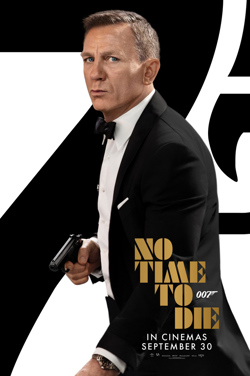

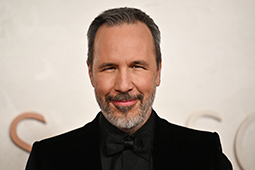
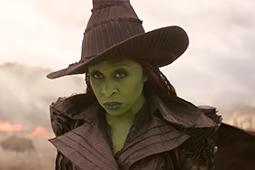
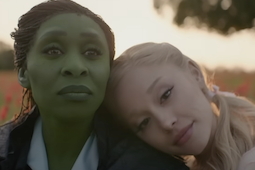
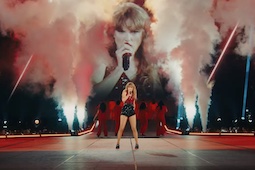

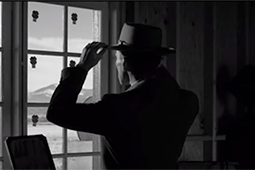
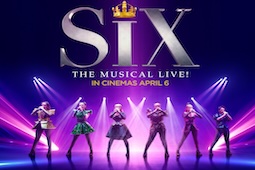
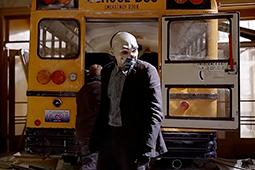
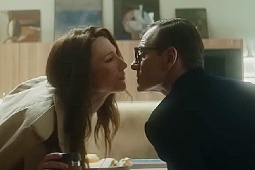
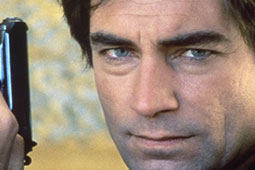


.jpg)
.png)

